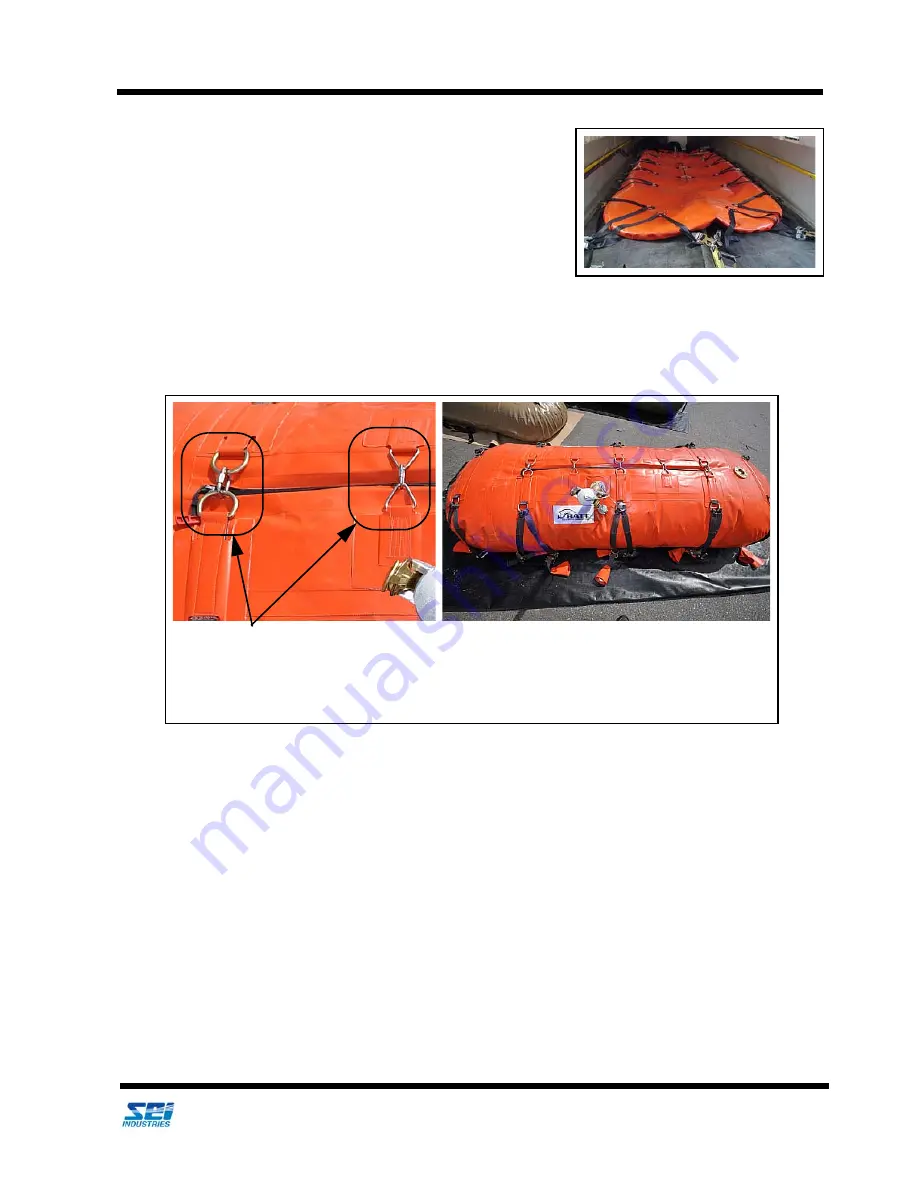
Section 4: BATT Operation
Installation and Operations
2019 BATT Diesel/Jet Fuel Operations Manual
(Version K)
9
We Engineer Solutions
4.
Unroll and position the tank, making sure the fill end is in
the correct location and the tank is properly positioned to
maintain its center of gravity. Use BATT handles to adjust
the tank’s position.
5.
Secure the tank to the tie down points and adjust the straps
so they are loose. Tie-downs shall be evenly distributed
lengthwise. The tie-down arrangement shall be symmetri-
cal on each side of the tank. For minimum distances
between any two attachment points, refer to the aircraft cargo loading manual.
Chain Links
Prevention of Static Electricity Build-Up
Before making any fueling connections to the BATT, the BATT fill/drain fitting shall be bonded to the
aircraft by use of a cable and the fueling equipment shall be bonded to the aircraft, providing a conductive
path to equalize the electrical potential between the fueling equipment, aircraft and BATT. The bond shall
be maintained until fueling connections have been removed.
As clothing and footwear are major cause of static electricity build-up, personal involved in BATT refueling
operations should minimize the amount of friction/rubbing on the tank and lining surfaces. It is
recommended to wear anti-static clothing and footwear for personal involved in BATT operation. Using
garments made of synthetic materials should be avoided. The person who operates the BATT has to be
discharged by touching an aircraft metal part before touching any BATT fittings. Failure to fully discharge
may ignite fuel vapours.
Operators need to ensure that the chain links are installed across the zipper before filling
the tank. When the chain links are removed for inspection, they must be replaced. If they
are not installed before filling, then it is possible to damage the zipper. If the zipper is
damaged, the tank will need to be returned to SEI for repair. It cannot be field repaired.














































